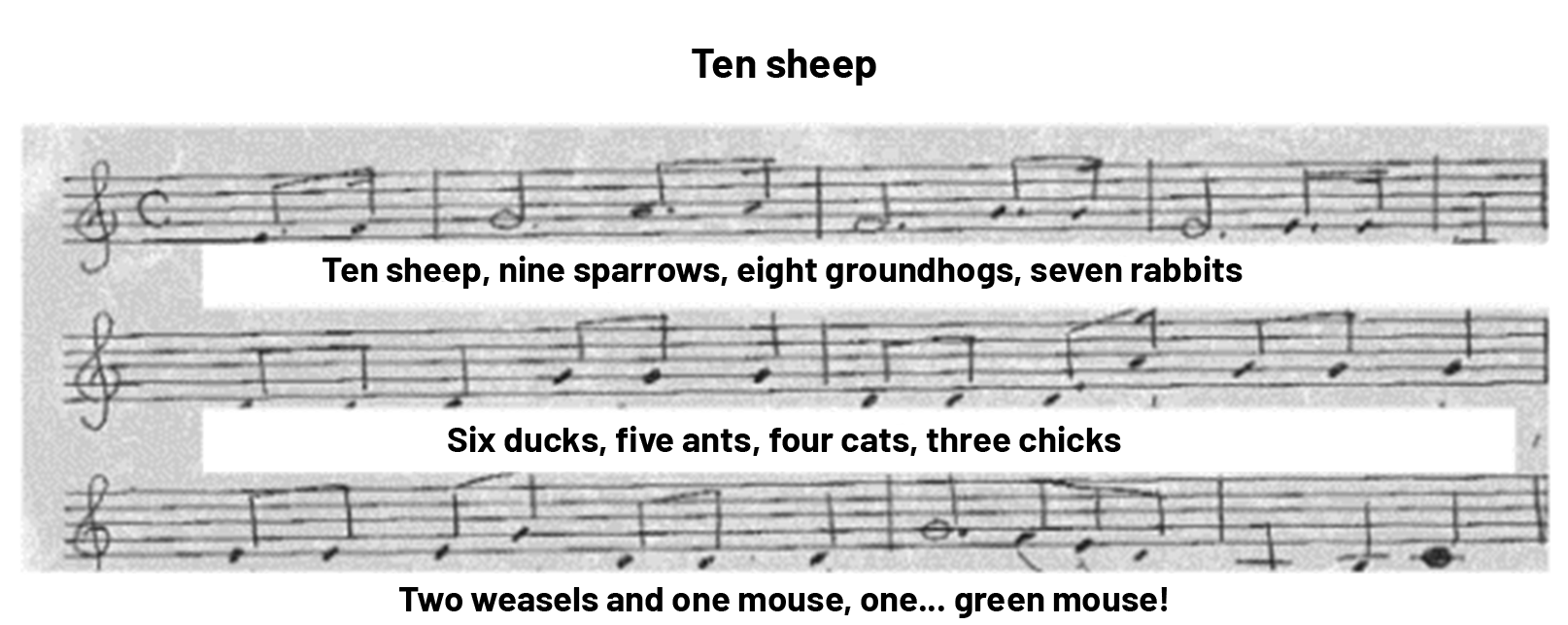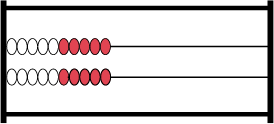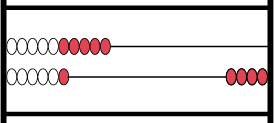B1.5 Count to 50 by 1s, 2s, 5s, and 10s, using a variety of tools and strategies.
Activity 1: Counting
Students need many opportunities to count and use 1-to-1 matching in order to understand all the concepts embedded in counting. Without understanding these concepts, counting is nothing more than a memorization activity.
Provide visual, concrete and relevant activities:
- to give students experience with counting, have them take an inventory at the beginning of the year of classroom materials such as pencils, glue sticks, scissors, textbooks, cubes, or paint brushes;
- present a situation where students have to count (for example, the number of shoes, buttons, pockets of students in the class);
- begin a math lesson by counting orally from different places on the 50s grid or board, or on the number line (in increments of 1 from 26, etc.);
- use rhymes, and finger plays, as these help students improve their counting and counting skills.
Source: translated from L’@telier - Ressources pédagogiques en ligne (atelier.on.ca).
Activity 2: Ten Sheep (Counting)
Directions
Write the song Ten Sheep on a large sheet of paper.

Sing the song, identifying the numbers.
Repeat the song more slowly and ask students to represent the number of animals with their fingers.
Point to the numbers and ask students to represent the same number using different fingers each time; for numbers from 1 to 5, ask them to alternate hands.
Proceed in the same way, but starting with different numbers in the song.
Then repeat the activity without displaying the song.
Teacher Moves
Check to see if students are showing the correct number of fingers to represent the numbers and provide support, if necessary.
Point to the numbers on the poster, one after another, and say, "Count with me.
Re-post the song for students who have difficulty counting backward without seeing the text.
Source: translated from Guide d’enseignement efficace des mathématiques de la 1re à la 3e année, Numération et sens du nombre, p. 17-18.
Activity 3: Let's Play Detective! (Skip Counting)
Explain that the Rekenrek is a tool that uses the benchmarks 5 and 10.

Point out that a Rekenrek is often made up of two rods and that the beads are grouped by colour: 5 white and 5 red beads per rod.
Move all the beads to the left. Hide the Rekenrek under a piece of cloth.
Move 4 red beads to the right on the bottom rod.

Unveil the Rekenrek for a few seconds and cover it again.
Ask students to say how many beads were on the left and how they counted them.
Encourage skip counting by 5s or 10s.
Count the groups of 5 beads (5 and 5 and 5 equals 15) plus the red bead on the bottom rod, making 16 beads in all.
Count 10 beads on the top rod and 5 on the bottom rod (10 and 5 equals 15) plus one more red bead, making 16 beads in all.
Give two Rekenreks, and number cards from 1 to 40, to each pair of students. One student should draw a card and represent the number on the Rekenreks. The partner must then count the beads to discover the number.
Note: Distribute more Rekenreks for greater numbers.
Teacher Moves
Circulate among the students and ask them the following questions:
- How did you place your beads to represent the number...? Is there another way to place them to represent this number?
- How did you determine the number? Show me using the Rekenreks.
- What would you do to represent a number on the Rekenreks if you want to add or subtract 5 or 10?
- When is it better to skip count by 10s using Rekenreks?
Choose a number that has been drawn by several teams to demonstrate various ways to count it on the Rekenrek(s), then discuss with students which strategies seem to work best.
Based on Catherine Twomey Fosnot and Maarten Dolk, Young Mathematicians at Work. Constructing Number Sense, Addition, and Subtraction, pp. 106-107.
Source: translated from Guide d’enseignement efficace des mathématiques de la 1re à la 3e année, Numération et sens du nombre, p. 18-19.
Activity 4: Count 10 Chairs (Counting)
For this game, 10 chairs are placed at the front of the class and 10 students sit in them.
Together, the class counts 1, 2, 3… and points to the order of the students sitting on the chairs.
During counting, students can follow the count on number lines or grids of 50.
Each time the count reaches ten (10, 20, 30…), the student being pointed to must leave their chair; each student then moves up one seat, and a new student sits in the empty chair in the row.
The count continues until a pre-selected, undisclosed number is reached.
When the count reaches this number, the student pointed to is declared the winner.
Source: translated from Guide d’enseignement efficace des mathématiques de la 1re à la 3e année, Numération et sens du nombre, Document d'appui, p. 4.
Activity 5: Skip-Counting by 1s, 2s, 5s, and 10s
Ask students to count a quantity of objects by 1.
Ask them to estimate the number of objects if the same objects are counted in pairs. Some students know that the quantity remains the same, others will think it will be different. Count the objects by 2.
Ask students to compare the two results.
Continue by asking students to estimate the number of objects if they are counted by 5s and then by 10s.
Note: In order to understand that quantity remains the same, even if counting by 1, 2, 5, 3, 10, etc., students will need to do many activities like this one using manipulatives.
Ask students to count a quantity of objects in different ways so that they recognize that the quantity remains the same regardless of the size of the counting groups.
Source: translated from L’@telier - Ressources pédagogiques en ligne (atelier.on.ca), p. 4.
